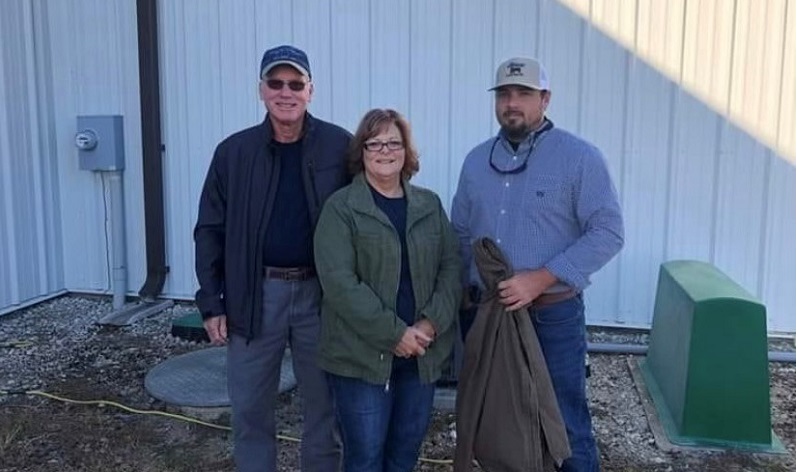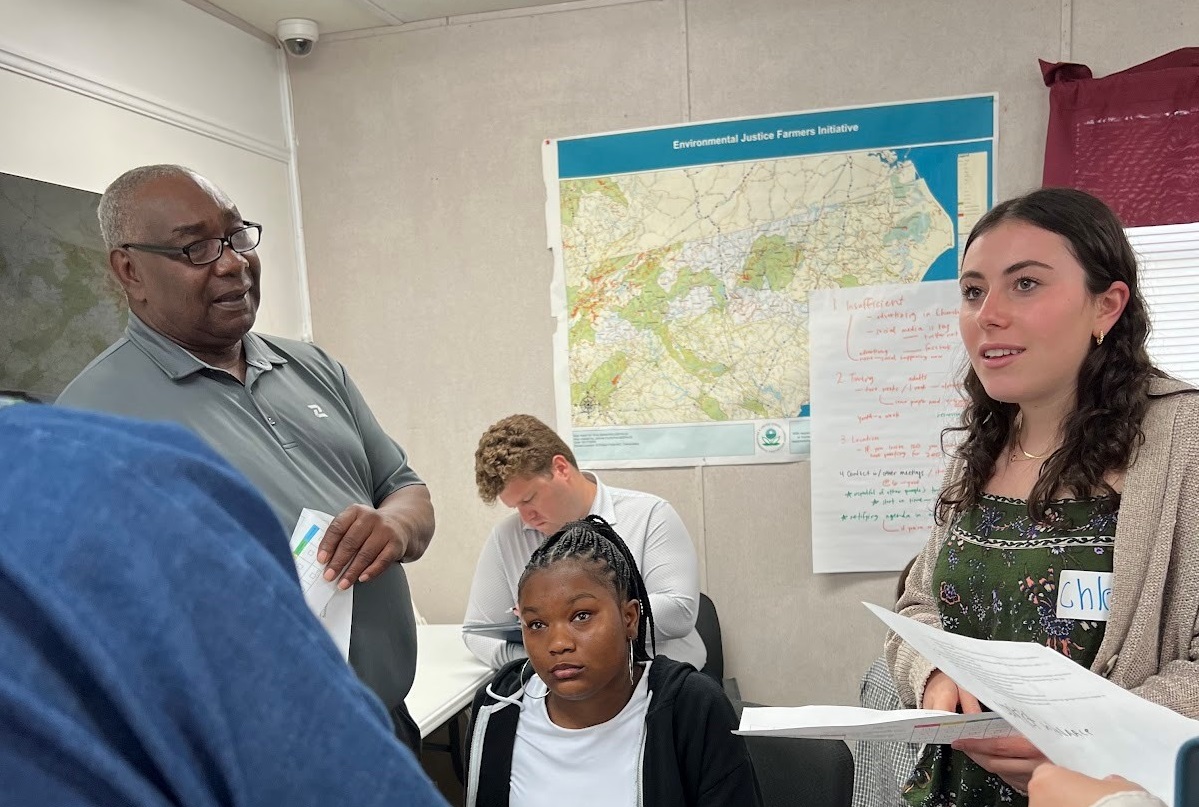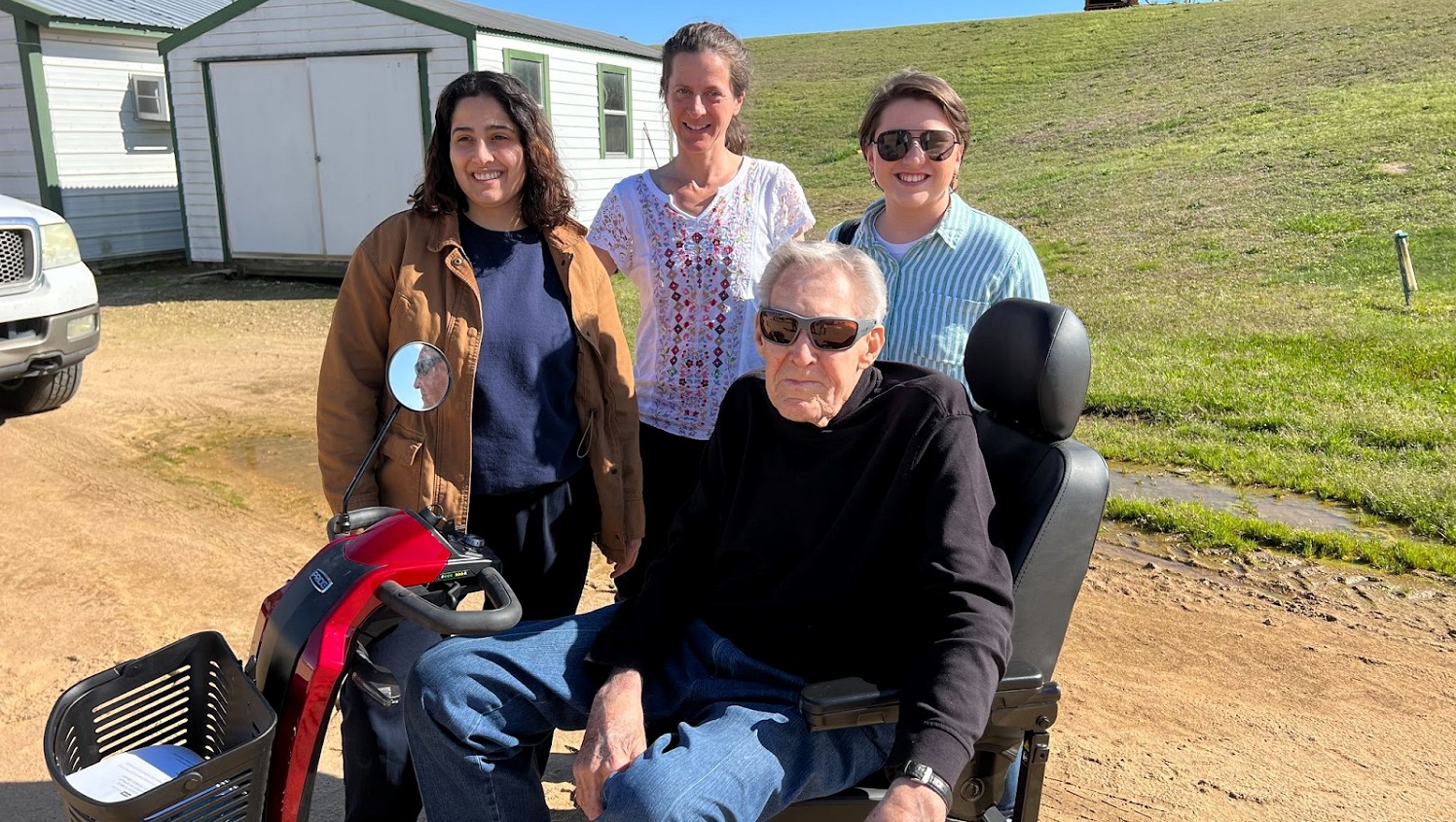“Where You are From, and Where Your Blood is in the Ground”: Screening An Outrage: a documentary film about lynching in the American South.
This post is written by Claire Du Laney, an MA student in Public History and NC State University.
Documentary filmmakers Hannah Ayers and Lance Warren visited NC State’s campus on Tuesday, September 19th to screen their most recent film An Outrage: a documentary film about lynching in the American South. Ayers and Warren have worked with the Southern Poverty Law Center to circulate the film and accompanying curriculum to roughly 500,000 teachers as part of the larger Teaching Tolerance project. [1] Students viewed the documentary as part of Dr. Booker’s HI 254 Modern American History class, joined by other classes here at NC State as well as UNC Chapel Hill.
So, what makes this film different from other documentaries about Jim Crow South and lynching? Rather than focusing on the graphic imagery that often accompanies discussions and films about this topic, Ayers and Warren chose to focus on the memories of these ritual and community-fueled scenes of torture, as told by descendants left to bear witness. The film places emphasis on the oral histories and the family’s stories of the victims of lynching, with context woven thorough out the narratives by scholars, journalists, and activists Isabel Wilkerson, Yohuru Williams, Mia Bay, and Jonathan Holloway.
The film opens with a montage of contrasting images of African Americans and whites interpreting the black body, from clips of theatrical blackface to poverty-stricken people working in cotton fields. The narrators provide a historical framework through which viewers engage with the realities of post-Civil War and post-Reconstruction America. Lynching, they argue, was extra-legal violence, a response to “crime” against a community’s norms or values. It was a tool of social control for white Americans through the application of ever-present fear in the African American communities which normalized a culture of violence. Terror wasn’t always expressed through the noose, but through systematic and institutionalized psychological torture. Ritual lynching was an expression of citizenship in that the black body was less than, utterly devalued and disposable. Scholars argue that there are two lenses through which to remember lynching: the popular and the actual. Popular interpretations recall allegations of raped white women as the reason for lynching. The data, however, reports that only 1/3 of allegations were of rape; perceived social transgression by African Americans fueled most lynching.
Yet the historians’ academic narrative is not the purpose of the film. This documentary invited us to visit the physical spaces where memories still haunt those who remain and remember. Kimberley Wilson in Drakes Branch, VA recounts the story of her ancestor John Mitchell Jr., who used his newspaper The Richmond Planet to protest lynching, and who traveled South to confronted perpetrators alone. Thelma Dangerfield in Paris, TX does research to restore dignity to victims, pouring over newspapers and photos. Ms. Dangerfield comments that while people don’t talk about lynching, the memory is palpable. She states “you can move as many statues and as many flags off of buildings but until you clean the heart out, the hate remains.” That hate remains in the forgetting, the luxury of not having to remembering. Individuals like Andre Johnson in Memphis TN, and “Sonny” Gray in Shubuta, MS challenge this cultural forgetfulness by inviting us to walk with them to areas chosen for lynching because they offered the greatest view for the most people, including children. Gray shows us the place still called “the hanging bridge” cut off from the road through the community’s efforts to forget. Hattie Lawson in Monroe, GA recalls the two African American couples gunned down before a crowd of 200 people without consequence. Viewers sit with Fostenia Baker and her uncontainable grief as she recounts the story of her great uncle Frazier, appointed Postmaster in Salt Lake, SC by McKinley, murdered along with his infant. We sit with Ms. Baker as she struggles to finish her story because her grief consumes her. We sit uncomfortably with this woman, not afforded the luxury of forgetting.
In the post-screening discussion, Warren offers that people’s lives counter the positive, upward American history narrative. In this Warren echoed the sentiment of Williams in the film that once the oral histories, the family secrets, and stories of trauma, once the “unofficial histories” are heard, the “official” narrative doesn’t seem as accurate. Individuals in the film offered that while things have changed, the memory of lynching remains today in a disturbing symmetry. The public recording of violence against black bodies, specifically police violence, mirrors that brutal ritual. Williams notes that we continue to live in what he calls the “shadow of some black brutalized body”: his parents lived in the shadow of Emmett Till, he lives in the shadow of Yusef Hawkins, and his son will live in the shadow of James Byrd and Treyvon Martin. Wilkerson seconds this, stating “we are the inheritors of all that’s gone before. We still are dealing with the ramifications of these secrets.” This film and the discussion that followed argued that knowing about the historical existence of lynching is not enough. Rather we must examine those secrets of family, cultural, and community traumas caused by the everyday inundation of devaluing the black body, guided by those who carry them.
- https://www.fieldstudiofilms.com/about/
- Categories:


